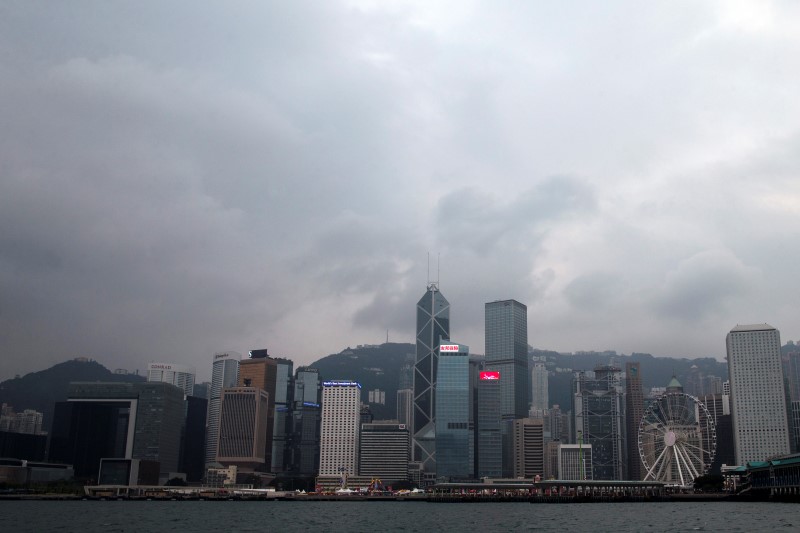By Jonathan Cable and Ian Chua
(Reuters) - Companies struggled in China and much of the rest of Asia in March, suggesting central banks may have to resort to more stimulus, just as factories in the euro zone begin to reap rewards from ultra-easy policy there.
Any indication of recovery will delight the European Central Bank which embarked on a quantitative easing programme in March, aiming to buy around 60 billion euros of bonds every month to drive up inflation and spur the recovery.
But three separate surveys of China's factory and services sectors released on Wednesday showed stubborn weakness in the world's second-biggest economy, putting the government's newly minted growth target of around 7 percent for the year at risk.
"The Chinese numbers don't look too bad but our guess is that the People's Bank of China will ease again. Another cut in interest rates might be on the cards," said Philip Shaw, chief economist at Investec.
"The recent numbers from the euro zone have suggested that the acuteness of the crisis has eased but there remains more work to be done."
Markit's final March manufacturing Purchasing Managers' Index (PMI) for the euro zone was at a ten-month high of 52.2, up from 51.0 in February and the 21st month in a row it has been above the 50 mark that separates growth from contraction.
Growing demand for exports helped drive the output index -- which feeds into a composite PMI due on Tuesday that is seen as good growth indicator -- to a ten-month high.
Speculation QE was coming from the ECB, and its eventual launch, has sent the euro
Bolstered by a similar pick-up in export orders and strong domestic demand, Britain's manufacturing industry grew at the fastest rate in eight months in March.
Stock markets and the dollar saw solid starts to the second quarter on Wednesday, following the upbeat European data.
SIMULATING ASIA
Analysts predict a modest expansion in U.S. manufacturing activity when figures are released later on Wednesday, taking the view that a recent slowdown was a blip related to harsh winter weather and keeping alive expectations the Federal Reserve will start to raise interest rates later this year.
However, hopes that a strengthening U.S. economy and lower energy costs would spur activity in Asia have proved elusive.
"For Asia-Pacific as a whole, we still see limited evidence that those tailwinds, namely the pick-up in U.S. consumer spending and sharply lower oil prices, are boosting growth," said Paul Gruenwald, Standard & Poor's Asia-Pacific chief economist.
China's official PMI ticked up to 50.1 in March from 49.9, but a private survey from HSBC (LONDON:HSBA) which focuses on small and mid-sized firms showed factory activity contracted after two months of recovery.
Both reports indicate economic conditions remain sluggish, which may be reflected in China's first-quarter growth figures on April 15.
"Recent policy actions, such as mortgage rule easing, suggest that concerns at the top level of the government are rising. We believe this suggests that more easing measures, particularly monetary easing measures, will be rolled out," said Qu Hongbin, HSBC's chief China economist.
"The March economic activity data are due to be released in the next two weeks. Further confirmation that the real economy is now tracking below the official target will likely prompt easing measures from the PBoC."
Some are also calling for even more stimulus in Japan, including one of the architects of premier Shinzo Abe's "Abenomics" reflationary policies.
The Bank of Japan must ease policy further at its meeting on April 30, Kozo Yamamoto told Reuters on Wednesday.
"The economy is at a standstill and prices are seen falling ahead. To do nothing isn't an option for the BOJ," said Yamamoto, an expert on monetary policy in Abe's ruling Liberal Democratic Party.
Japanese manufacturing activity expanded more slowly in March than in February as domestic orders contracted for the first time in almost a year, in a worrying sign the recovering economy may be losing momentum.
Figures elsewhere in Asia provided a sobering read.
In South Korea, exports suffered their biggest fall in two years while factory activity in Indonesia - the biggest economy in the Association of Southeast Asian Nations (ASEAN) - contracted for the sixth straight month as output and new orders dropped at the fastest rate on record.
